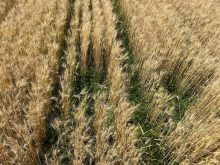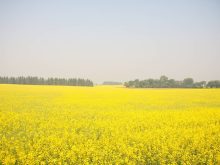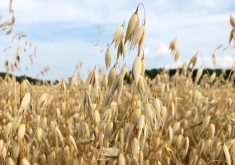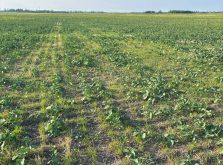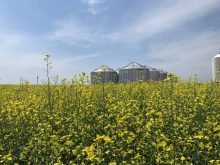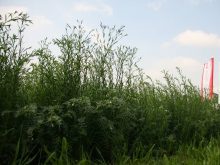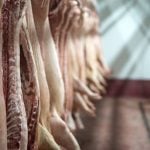Last year, Collin Shirtliff knew the threat to his canola crops posed by verticillium stripe but he wasn’t overly concerned.
However, that changed late in the summer when he began harvesting the crop on the 3,600-acre farm he and his family operate near Starbuck, Man.
What looked like an extremely promising crop weeks earlier suddenly appeared to be anything but.
Read Also
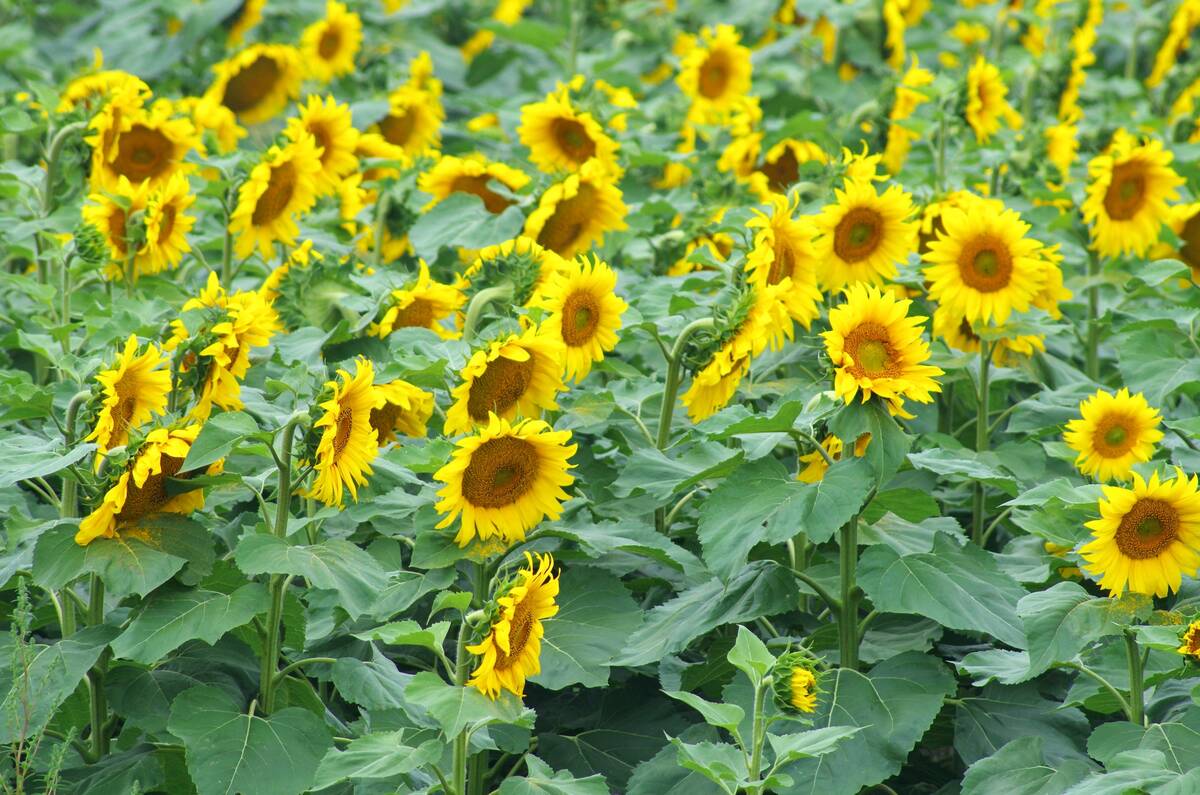
Made-in-Manitoba sunflower hybrid headed to market
Manitoba’s confection sunflower growers will have a new seed option next spring developed specifically for performance in the province. The…
“I didn’t know what was going on at first. We started combining and all of this dust rose up,” Shirtliff recalls.
“The yields ended up being quite low, about half of what I expected. I started pulling up plants thinking it might be clubroot but there was nothing like that. I started looking at some of the stalks and I could see some striping.
“Right away I thought verticillium. I stopped in at one of my local agronomists and got him to go out there and he confirmed it.”
Verticillium stripe is a relatively new disease threat in Western Canada. It was first discovered in Manitoba in 2014 and its prevalence in that province has been climbing steadily ever since.
Although it has yet to have the same effects in Saskatchewan and Alberta, the pathogen has been detected in both of those provinces and it’s now “on the radar right across the Prairies,” says David Kaminski, a field crop pathologist with Manitoba Agriculture.
Verticillium stripe is a fungal disease that primarily affects canola. It survives in the soil and on crop residue and is comprised of extremely small structures known as microsclerotia.
It damages canola by blocking the vessels that carry water and nutrients up and down the plants, limiting available food and moisture.

The most noticeable symptom is a unilateral discolouration of the plant stem. One side will be a normal, healthy green while the other side is brown. The pattern can alternate on the stem. A grey starburst pattern can be seen in a cross section of the stem cortex.
Kaminski says verticillium stripe is sometimes confused with fusarium wilt, another fungal disease of canola. Both have similar symptoms during the green stage of crop development and both can cause plants to wilt, he adds.
“To a casual observer, they might think they’re looking at one when they’re looking at the other,” says Kaminski, who spoke about the disease at this year’s Crop Connect Conference in Winnipeg.
Fusarium wilt is not as common as other canola diseases due to the introduction of a resistant gene to common Canadian spring canola varieties in the early 2000s. However, details about the disease can be found at https://www.canolacouncil.org/canola-encyclopedia/fusarium-wilt/.
Verticillium stripe can also be mistaken for blackleg. The Canola Council of Canada has an excellent guide for differentiating verticillium stripe from blackleg at https://www.canolacouncil.org/download/130/agronomy-guides/28744/verticillium-stripe-blackleg-resource-v5.
The threat from verticillium stripe is twofold: it limits the nutrients and water a plant receives and also makes harvesting more difficult because it can cause plants to flop over.
Kaminski says the severity of potential yield losses is also unknown. In countries where verticillium stripe has been present longer, yield losses can be as high as 50 per cent but growers in Western Canada peg it at around 30 per cent, he adds. It can be found in combination with blackleg, making it difficult to determine which disease caused what level of damage.

The good news is that verticillium stripe doesn’t appear to have a significant effect on canola quality.
Perhaps the most frustrating aspect for growers is a lack of control options.
Kaminski says developing resistance in canola is “on the radar” of most major ag companies and several have products in development, but it will likely be several years before any are commercially available.
His advice to decrease the risk of verticillium stripe infection is to adopt more conservative rotations.
“The longer you can stretch the interval between that crop of the same type, the better,” he says. “That would be the case with verticillium stripe as well. We’ve seen it more in areas where there is a tighter canola rotation. (Conservative rotations) are probably the best line of defence right now.”
Kaminski also suggests growers regularly scout their fields for signs of the disease or hire someone to do it for them. If they suspect it’s in their fields, he recommends sending plant samples to a diagnostic lab.
Shirtliff says the outbreak in his field last summer prompted him to rethink future rotations. He says it will be at least four years before he plants canola again in the fields infected with verticillium stripe.
His advice to other growers is to take the threat posed by verticillium stripe seriously.
“I’ve talked to a lot of my friends and said, ‘you’ve got to watch out for this.’ I know it was in some other people’s fields and it maybe wasn’t quite as severe, but it’s something we’re going to have to deal with.
“In our area there’s still a lot of canola being grown every second year and I think that’s really going to start catching up with people.”




